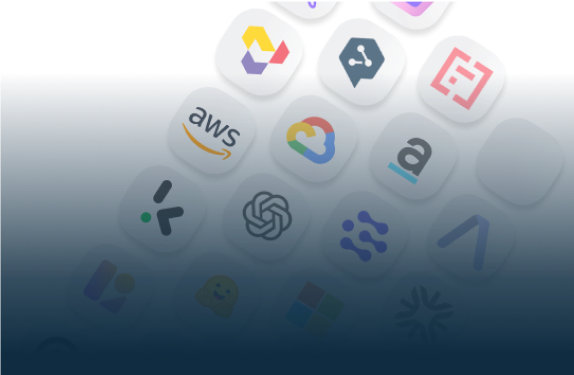
Start Your AI Journey Today
- Access 100+ AI APIs in a single platform.
- Compare and deploy AI models effortlessly.
- Pay-as-you-go with no upfront fees.
.webp)
Whether in customer support, legal services, healthcare, or various other domains, Retrieval Augmented Generation (RAG) proves its worth as a potent tool for tackling knowledge-intensive tasks with finesse and precision. In this definition, we'll delve into the inner workings of RAG and its remarkable applications in diverse sectors.
The term "Retrieval Augmented Generation (RAG)" refers to a technique used to enhance the performance of general-purpose language models.
Although tasks like sentiment analysis and named entity recognition can be performed effortlessly through fine-tuned language models without requiring additional background knowledge, more complex and information-intensive tasks can be better handled through a distinct approach.
To address these tasks, Meta AI researchers introduced RAG. This method combines an information retrieval component with a text generation model, enabling efficient access to external knowledge sources.
By doing so, RAG can attain increased factual accuracy, enhance the dependability of produced responses, and alleviate the problem of "hallucination" in generated content.
RAG takes input and retrieves a set of relevant documents from a source such as Wikipedia. These documents are then merged with the initial prompt to generate context, which is then entered into the text generator to produce the final outcome.
This flexibility is valuable, especially when dealing with tasks where information may change over time, diverging from traditional language models that maintain fixed knowledge. It facilitates language models' access to the newest information without necessitating retraining, making it appropriate for generating dependable outputs through retrieval.
Lewis et al. suggested an approach in 2021 that employs a pre-trained seq2seq model as parametric memory and a dense vector index of Wikipedia as non-parametric memory, retrieved with a neural pre-trained retriever.
It has shown impressive performance across diverse benchmarks such as Natural Questions, WebQuestions, CuratedTrec, MS-MARCO, Jeopardy questions, and FEVER fact verification. Its responses are consistently more factual, specific, and varied, highlighting its potential to amplify language models' effectiveness in knowledge-intensive duties.
Retriever-based techniques have gained popularity lately and are frequently combined with popular large language models, such as ChatGPT, to enhance their performance and ensure increased factual consistency in the content generated.
Eden AI provides a feature that allows you to build your chatbot trained with your data called AskYoda (Ask Your Data). Users may easily build a customized AI assistant with AskYoda that is suited to their unique database needs without needing any coding experience.
The easily accessible API makes integration with current software easy to do. Check out our article about AskYoda here and you can also find it's tutorial video below.
RAG holds substantial potential in a variety of industries, providing a versatile solution to improve knowledge-intensive tasks. Here are some notable use cases for RAG in various sectors:
RAG can aid medical professionals in staying up to date with the latest research and clinical guidelines. It can retrieve and produce patient-specific treatment recommendations and fact-based medical reports, as well as assist in analyzing drug interactions, thus enhancing patient care and decision-making.
In the legal sector, RAG can assist solicitors and legal researchers in swiftly accessing a plentiful array of case law, statutes, and legal documentation. It can produce succinct legal synopses, condense intricate cases, and furnish pertinent precedent details for more effective legal scrutiny and matter groundwork.
Journalists may use RAG to simplify research and fact-checking procedures. The tool is capable of retrieving and producing current data, statistics, and historical background, which enables the creation of precise news articles, reports, and investigative journalism.
RAG can be integrated into e-learning platforms and virtual tutors. It is capable of retrieving educational materials, responding to student queries with detailed explanations, and producing customised study guides, all of which enhance the overall learning experience.
In the financial sector, RAG can assist in generating data-driven reports, investment analysis, and market insights. It can retrieve financial news, historical market data, and expert opinions, helping professionals make informed decisions and provide clients with well-informed recommendations.
RAG assists in enhancing customer experiences through product information, billing support, and personalized recommendations.
Retrieval Augmented Generation (RAG) is an innovative methodology that integrates information retrieval with text generation. This process aims to boost the accuracy and dependability of responses while preventing content hallucination.
RAG has displayed noteworthy outcomes in multiple assessments, establishing it as an essential component in enhancing the efficiency of language models that create factually consistent content.


You can directly start building now. If you have any questions, feel free to chat with us!
Get startedContact sales